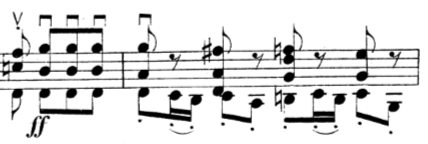The term you are looking for might be „bwv 1001 fugue analysis“ and will give you answers by google like:
https://repository.asu.edu/attachments/110400/content/Felice_asu_0010E_12782.pdf
A Pedagogical and Performance Edition of J. S. Bach’s Violin Sonata I in G minor, BWV 1001, Transcribed for Guitar: Transcription, Analysis, Performance Guide, Pedagogical Practice Guide, and Recording.
by
Joseph Philip Felice
A Research Paper Presented in Partial Fulfillment of the Requirements for the Degree Doctor of Musical Arts
or
https://etd.ohiolink.edu/!etd.send_file?accession=ucin1122323822&disposition=inline
ABSTRACT
J. S. Bach’s Three Sonatas for Solo Violin exhibits formal coherence on three levels: first, through every movement; second, through the four movements in every Sonata; and third, through the three Sonatas in the set. The first issue has been treated in my previous thesis1 concerning the first statement and its development throughout the movement; this thesis will discuss the latter two subjects.
The Fuga in each Sonata becomes the central movement due to its exceptional musical weight. The other movements surround the Fuga functionally: the first movement as a prelude, the third as a tension-reliever, and the fourth as a brilliant finale. Not only do the general figures on the surface support the function, the formal activities in each movement do as well. At the same time, the formal congruity between the four movements is observed in the choice of tonality, sectionalization, uses of motives, etc. After an analysis of each Sonata’s formal character based on the coherent compositional scheme, a meta-analysis is possible to determine the characteristics that shape the Three Sonatas as a whole.
This thesis provides analyses of each movement, each sonata, and the entire set of Three Sonatas, concentrating on how the set is bound closely together through formal correspondences. Its chapter arrangements are: I. Introduction, II. Position and Function of
1Eun-ho Kim, “Form and Function in the Slow Movements of J. S. Bach's Three Sonatas for Solo Violin, BVW 1001, 1003, and 1005” (D.M.A. thesis, University of Cincinnati, 2002).
Each Movement, III. Coherence and Individuality of Each Sonata, IV. Musical Characteristics of the Set of Three Sonatas as a Whole, and V. Summary and Conclusion.
Just to show the first two examples ...
The next is the link to your question here in this SE
and this is the 3rd link:
https://repository.asu.edu/attachments/110400/content/Felice_asu_0010E_12782.pdf

